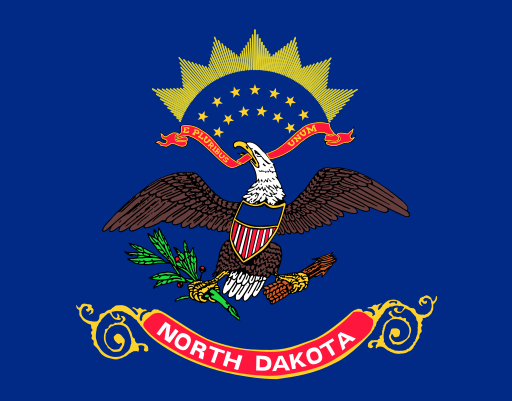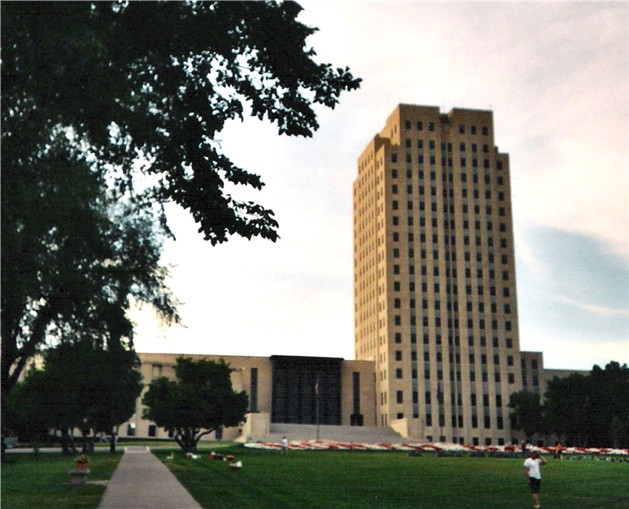Tag: north dakota
-
North Dakota Legislature sustained governor’s veto of universal school choice bill: analysis of rural vs urban/suburban votes

What’s the Story The North Dakota House sustained Gov. Kelly Armstrong‘s (R) veto of the universal school choice bill House Bill 1540 on April 25. The veto was sustained in the House by a 45-48 vote, with the 45 votes supporting the veto override coming from Republican members. The 48 votes opposing consisted of 37…
-
North Dakota voters to decide on ballot measure limiting constitutional amendments to a single subject at June 2026 primary election

Voters in North Dakota will decide on a constitutional amendment on June 9, 2026, that would establish a single-subject requirement for constitutional amendments. The proposal follows a 2024 measure that voters rejected, which would have established a single-subject rule for all citizen-initiated measures and enacted other changes. Single-subject rules require ballot measures to focus on…
-
North Dakota joins two states asking voters to increase approval requirements for ballot measures

North Dakota voters will decide on a constitutional amendment that would establish a 60% supermajority requirement in order for voters to approve new constitutional amendments. The supermajority requirement would apply to both constitutional amendments proposed by initiative petition and amendments referred to the ballot by the state legislature. This amendment will appear on the ballot…
-
North Dakota legislature refers amendment to 2026 ballot amending term limits for state legislators approved by voters in 2022

North Dakota voters will decide in Nov. 2026 whether or not to change term limits for state legislators. Under the amendment, legislators could serve four complete four-year terms (about 16 years) in the state legislature regardless of chamber. Partial terms would not count toward the limit. It would also repeal the provision of the 2022…
-
Incumbent Kirsten Baesler and Jason Heitkamp are running in the nonpartisan general election for North Dakota Superintendent of Public Instruction

Incumbent Kirsten Baesler and Jason Heitkamp are running in the general election for North Dakota Superintendent of Public Instruction on November 5, 2024. This election is a nonpartisan election, but both candidates are Republicans. The Dickinson Press’ James B. Miller Jr. wrote the office is ” a pivotal role responsible for overseeing North Dakota’s public…
-
North Dakota voters will decide a marijuana legalization initiative following defeats in 2018 and 2022

North Dakota will decide on a ballot measure in November to legalize marijuana. It will be the third time the state will vote on a marijuana legalization initiative. Burleigh County Commissioner Steve Bakken (R) filed the ballot initiative. He said, “A lot of what we don’t want to see is what’s going on in some…
-
North Dakota initiative to prohibit property taxes certified to appear on Nov. ballot

North Dakota voters will decide on a ballot initiative in Nov. 2024 to prohibit property taxes, except those used to pay for bond debt. End Unfair Property Tax, the campaign supporting the measure, submitted around 41,000 to the secretary of state’s office on June 28, 2024. On Aug. 2, Secretary of State John Thurston certified…
-
Signatures submitted for North Dakota initiative to legalize recreational marijuana

In North Dakota, the organization New Economic Frontier reported submitting 22,000 signatures on July 8, 2024, for a ballot initiative to legalize recreational marijuana in the state. At least 15,582 of the signatures must be valid. Burleigh County Commissioner Steve Bakken (R) filed the ballot initiative. He said, “A lot of what we don’t want…
-
Signatures submitted for North Dakota initiative to prohibit property taxes

In North Dakota, a campaign, End Unfair Property Tax, submitted signatures on June 28, 2024, for a ballot initiative to prohibit property taxes, except those used to pay for bond debt. Former State Rep. Rick Becker (R-7) is chairman of the campaign. End Unfair Property Tax submitted about 41,000 signatures. To qualify for the ballot,…
-
North Dakota becomes the first state to set age limits for congressional representatives after voters approve Measure 1

Voters in North Dakota approved Measure 1, a ballot initiative establishing an age limit for congressional candidates, at the election on June 11. The vote was 60.88%-39.12%, and turnout was 20.11%. Specifically, Measure 1 is designed to prohibit anyone from being elected or appointed to the U.S. Senate or House of Representatives if he or…

